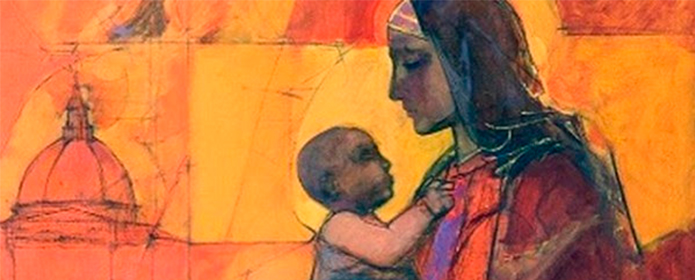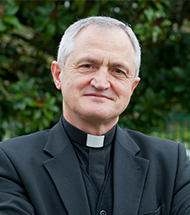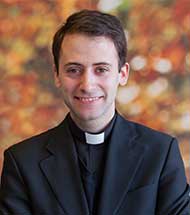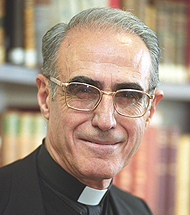"Creative Art in St. Bonaventure" is published
The author of the book is Professor of Theology Isabel María León.


The publishing house EUNSA has published "El arte creador en san Buenaventura. Fundamentos para una teología de la belleza", whose author is the professor of the School of Theology Isabel María León.
St. Bonaventure is one of the medieval theologians who gave greater space to beauty and art in his understanding of reality. Faithful to the inspiration of St. Francis, he had a particular sensitivity to discover the presence of God in all beings and to enjoy their beauty and goodness. He understood creatures as a language expressive of the beauty and perfection of their Creator, as a loving gift that God bestows on man to beautify and rejoice his life. These aspects of Bonaventurian thought have been rediscovered especially since the last third of the 20th century. However, less attention had been paid to his ideas on the divine creative art, in which we find the foundation of the expressive beauty of creatures: it is the topic that is explored in this work.
After presenting the historical context and the intellectual tradition in which the thought of St. Bonaventure is inserted, we first study his way of understanding human art, and analyze the nuanced comparison he established between the way of producing by art or by nature. It then considers in what sense he posed the analogy between the art of man and the creative action of God, specifying the similarities and differences between the operation of both agents, as a consequence of the supreme perfection of the divine Artist. These questions have important consequences for understanding the transcendence and freedom of God, and what defines creatural reality.
Since the creative Artificer is the Triune God, we study the possibility of contemplating the Trinitarian communion of the creative action according to the structure proper to an artistic operation (which in Bonaventurian thought is characterized by the articulation of power, wisdom and benevolence). The way to establish this parallelism is provided by the doctrine of appropriations. In the creative art, St. Bonaventure attributes to the Father omnipotence, as the first origin of creative fecundity; he refers to the Son the process of distinction and government of the universe as the Word of the Father, an exemplar of great beauty where the forms of created beings and the laws that govern them are expressed; he relates to the Holy Spirit the motive of creation: the benevolent and generous communication of God, who out of love decides to make creatures sharers in his goodness.
On the other hand, in the bosom of the Triune God, St. Bonaventure contemplates the Son as the "art" of the Father, through whom and for whom all things were made. From this point on, he raises with great depth the revelatory dimension of the creative act, for in the Word-Art the mystery of God and the radical truth of all that exists are fully revealed. The development of these ideas leads to the understanding that the beauty of each creature is an expressive likeness of some facet of the beauty of its Creator. Creation is thus discovered as a communication from God to his intelligent creatures so that in the beauty of their works they may know the supreme beauty of his wisdom and goodness, inviting them to correspond to the gift of his love.
In this way, the analysis of the divine creative art not only contributes to a deeper understanding of the aesthetic thought of St. Bonaventure, but is also enlightening in order to delve deeper into fundamental theological questions such as the consistency of creation, the dignity of the human-artist and his mission statement in the universe, the Trinitarian structure of the creative act, the expressive mediation of the Word, etc. Within the Augustinian tradition, St. Bonaventure contemplates the universe as an immense poem constituted by creatures as beloved words pronounced by God, a song of multiform harmony in which resounds in a finite way the supreme beauty of the one infinitely loved and loving Word.
Book fileIsabel María León Sanz, El arte creador en san Buenaventura. Fundamentos para una teología de la belleza, Eunsa, Pamplona 2016, 15.5 x , 429 pp.





